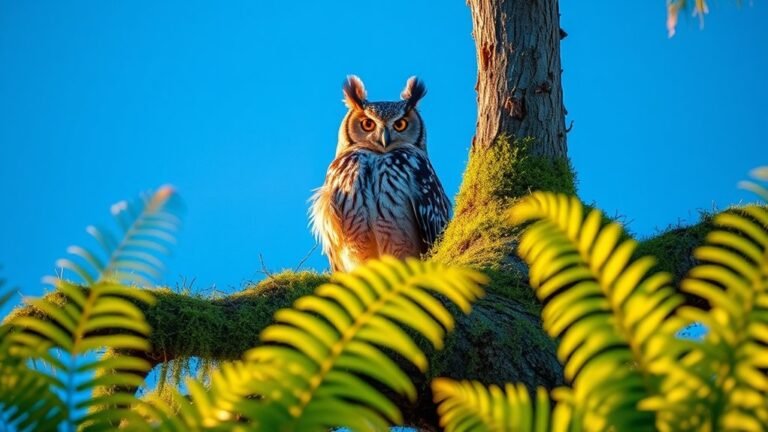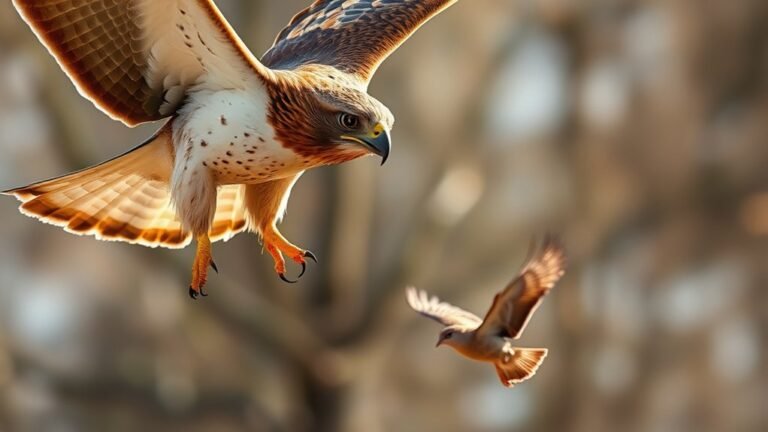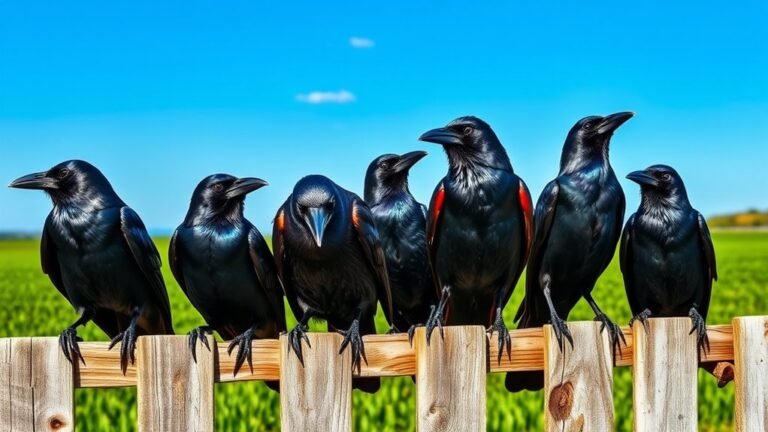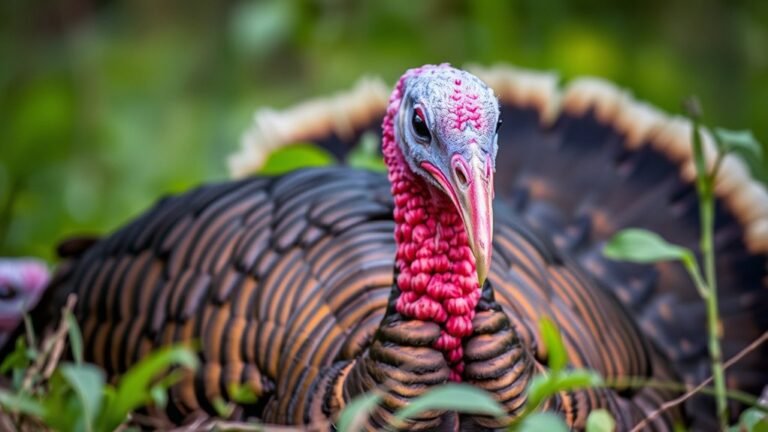Owls Found in Virginia: Species Overview
Owls are important to Virginia's natural world. Different types of owls live in many habitats across the state. Learning about their features, calls, and actions helps us see why they matter.
For example, the Eastern Screech Owl has a spooky call. The Great Horned Owl looks strong and impressive. Each owl species plays a role in keeping nature in balance.
As you learn more about these amazing birds, you'll also find out about the problems they face. This shows why it's important to protect them and their homes. Let's appreciate these beautiful animals and work to keep them safe!
A Quick Overview
Did you know that Virginia is home to five common owl species? Let's look at them!
- Eastern Screech Owl: These owls are small and have a special way of making sounds at dusk and dawn. Their calls help them blend into their surroundings.
- Great Horned Owl: These owls are strong and work together during nesting. They have unique ears that look like tufts.
- Barred Owl: Barred Owls have a cool call that is easy to recognize. They like to live in thick forests and wetlands, mostly hunting when the sun rises or sets.
- Barn Owl: Barn Owls have heart-shaped faces. They help keep pests like rodents away and they make loud hisses and screeches to talk to each other.
- Northern Saw-whet Owl: This is a small, round owl known for its tiny size. It is very hard to spot since it often hides well during the day.
Owls are fascinating creatures that play important roles in nature. Keep an eye out for them next time you're outside in Virginia!
Eastern Screech Owl: Characteristics and Calls

The Eastern Screech Owl is a small bird that you mightn't notice right away. It only grows to be about 6 to 10 inches tall. This owl comes in two main colors: gray and red. These colors help it blend in with tree bark, making it hard to spot in the wild.
One of the most interesting things about Eastern Screech Owls is their calls. You can hear their trills and hoots at dusk or dawn. These sounds help them mark their territory and attract mates. When you hear them, it adds a special feeling to the night.
Learning about the Eastern Screech Owl can help you connect with nature. It's a fun way to appreciate the unique wildlife in Virginia.
Great Horned Owl: The Majestic Hunter
The Great Horned Owl is one of the strongest hunters in North America. It has unique tufts on its head that look like horns and can be as tall as 25 inches. This owl has sharp eyesight and strong talons that help it catch food.
Great Horned Owls are very adaptable. They can live in many different places. During mating season, these owls hoot to mark their territory and attract mates.
For nesting, they often take over old nests made by other big birds. The female lays between 1 to 5 eggs, and both parents sit on the eggs to keep them warm. This teamwork shows how dedicated they're as parents and how close they're as a couple.
Watching Great Horned Owls is exciting. Their unique behaviors and strong family bonds make them interesting creatures to learn about and observe.
Barred Owl: The "Who-Cooks-for-You" Call

The Barred Owl is known for its famous call that sounds like "who-cooks-for-you." You can often find these owls in Virginia's woods. They live in many places, like thick forests and open wetlands.
Barred Owls hunt for small animals and birds during dawn and dusk. They use their calls to show others where their home is and to talk to their partners.
If you look up into the trees, you might see one sitting quietly, with its feathers blending in with the branches.
With their beautiful calls and ability to live in different areas, Barred Owls add charm to Virginia's nature. They remind us to explore and enjoy the wild places around us.
Barn Owl: Silent Flyers of the Night
As night falls, keep an eye out for the Barn Owl. Their flight is soft and silent, making them easy to miss. These owls are known for gliding quietly through the air. They hunt mostly small animals, using their sharp hearing and keen sight to find food in the dark.
- Their wings are covered in feathers that help them blend into the evening sky.
- They've a heart-shaped face that helps them hear sounds better.
- Barn Owls like to nest in old barns, tree holes, or on cliffs.
- Their diet mainly consists of rodents, helping to control pests.
- They communicate with each other using different sounds, like hisses and screeches.
Watching Barn Owls nest can teach you about their life and how they adapt to different places.
This connection with nature can be a wonderful experience.
Long-eared Owl: Masters of Stealth

Long-eared Owls are amazing hunters. They live in woods and can be hard to spot because they're so quiet. Their long ears, shaped like tufts, help them hear better, especially at night. This helps them find food, mainly small animals like voles.
These owls are active at night. They stay still and hide among tree branches, blending in with their surroundings. This helps them avoid danger and sneak up on their prey. They've sharp eyesight and ears that let them notice small movements in the dark.
During breeding season, Long-eared Owls make soft hooting sounds to talk to each other. This helps them build strong bonds with their mates.
Seeing these owls in Virginia's woodlands means the environment is healthy. They play an important role in keeping nature balanced and supporting other wildlife.
Short-eared Owl: Open Habitat Specialists
The Short-eared Owl loves open places like grasslands and marshes. You can see them flying low over fields, looking for food. They're excellent hunters.
During breeding season, they put on special shows to win a mate.
These owls like:
- Big, open spaces
- Tall grass swaying in the wind
- Skies at dusk with orange and purple colors
- Quiet flights under the moonlight
- Nests hidden on the ground in grass
They need wide areas to find small animals to eat.
Watching these owls helps you appreciate their unique homes. Seeing them in action is a joy.
Northern Saw-whet Owl: The Tiny Nocturnal Predator
The Northern Saw-whet Owl lives in dense forests and shrubby areas. Unlike the Short-eared Owl, which prefers open spaces, this tiny owl likes to stay in thick woods.
It often nests in tree holes or old woodpecker nests. This shows how well it can adapt to different forest settings.
These owls build their nests low to the ground. They use twigs, leaves, and other plants to make their home.
Female Northern Saw-whet Owls usually lay 3 to 6 eggs. Both the mom and dad help take care of the baby owls.
At night, the Northern Saw-whet Owl hunts for food. It mostly eats small mammals and insects.
This makes the owl an important part of the forest. It helps keep animal populations balanced in its home.
Barn Owl vs. Great Horned Owl: Key Differences
Two popular owls are the Barn Owl and the Great Horned Owl. They're different in size, where they live, and how they hunt. Knowing these differences helps us enjoy these amazing birds more.
- Barn Owl: has a thin body, a heart-shaped face, and light feathers.
- Great Horned Owl: has a strong body, big ear tufts, and brown and white feathers.
Where They Live:
- Barn Owls like open fields and farms.
- Great Horned Owls can live in many places like forests and cities.
How They Hunt:
- Barn Owls mainly catch small mammals.
- Great Horned Owls can hunt many animals, including both mammals and birds.
Mating:
- Barn Owls form long-term pairs.
- Great Horned Owls usually find a mate just for one breeding season.
These differences show how each owl is special and important in nature.
Owl Habitats in Virginia: Where to Find Them
Owls live in many places in Virginia. They like different types of habitats, such as forests. You can find them in thick woods or open areas with trees. Owls need cover for nesting and hunting, so look for them in those spots.
Wetlands and fields are great places to see owls, especially at dusk. This is when they're most active. The Eastern Screech Owl likes suburban areas, while the Great Horned Owl prefers more remote places.
If you visit parks and natural reserves in Virginia, you can see different types of owls. Spending time in these habitats helps you connect with these amazing birds. Being outdoors is a great way to feel part of nature!
Feeding Habits and Prey Selection
Owls are fascinating birds that have unique eating habits. They hunt a variety of prey depending on where they live. Understanding what owls like to eat can help you appreciate these amazing creatures even more.
They've special ways of hunting, using their sharp eyesight and excellent hearing, especially at night.
Here are some common types of prey owls go after:
- Small mammals, like voles and mice
- Birds, such as songbirds and waterfowl
- Insects, including crickets and beetles
- Amphibians, like frogs
- Reptiles, like snakes and lizards
Owls are sneaky hunters. They move quietly and surprise their prey, which makes them really good at catching food.
Owls can live in different places, which helps them survive and play an important role in nature, especially in Virginia's environment.
Conservation Efforts for Owls in Virginia
Owls in Virginia need our help. Their numbers are dropping because of different dangers, so we must step in to protect them.
One key part of this effort is keeping their homes safe. This means looking after places where they nest and where they find food.
You can help by joining local projects that restore owl habitats. These projects not only help the owls but also bring people in the community together.
Many organizations look for volunteers who can help watch over owl numbers and teach others why owls matter. When we all work together, we can make a bigger difference for these amazing birds.
Frequently Asked Questions
What Time of Year Do Owls in Virginia Typically Mate?
Owls in Virginia typically mate from late winter to early spring. During this time, you can see owls getting busy with nesting and finding a safe spot for their young. They prepare their homes and defend their territory to ensure their babies have a good chance of surviving. It's a special time for these birds!
Are Any Owl Species in Virginia Considered Endangered?
Yes, some owl species in Virginia are endangered. These owls need our help to survive. Protecting their homes and restoring their habitats can support their populations. You can help by talking about these issues in your community and supporting local conservation efforts. Every little bit counts!
How Can I Attract Owls to My Backyard?
To attract owls to your backyard, you can follow a few simple steps. First, put up owl houses. These houses should look like their natural homes. Next, provide natural perches, like tall trees or sturdy poles, where owls can rest. Keeping your yard quiet will also help. Finally, having a steady food source, like small rodents or insects, nearby can make your yard even more inviting for the owls.
Do Owls Migrate or Stay Year-Round in Virginia?
Owls act differently depending on the seasons. Some owls live in Virginia all year long. They build nests and hunt for food close to home. Other owls fly to different places to find food. Knowing how these owls behave can make watching them more fun. You can enjoy seeing these amazing birds right in your backyard!
What Are Common Predators of Virginia's Owls?
In Virginia, owls have some natural enemies. Big birds like hawks and eagles often hunt them. Some animals, like foxes and raccoons, will also try to catch owls. This shows how all animals, big and small, help keep nature balanced. It's interesting to see how these different creatures interact in their environment!

Luna is the passionate founder and author of Birds and You, a website dedicated to sharing her love for birds with fellow enthusiasts. Through her engaging articles and guides, she aims to educate and inspire others to explore the fascinating world of birds. When she’s not writing, you can find Luna observing birds in their natural habitats or sharing beautiful bird photography on Pinterest. Join her on this journey to celebrate and protect our feathered friends!







